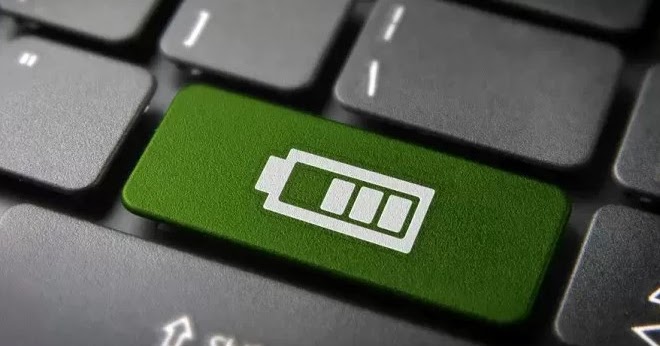Options and Programs to keep under control the laptop temperature and the energy consumed by Windows
This energy problem also affects notebooks that, in summer temperatures, suffer from the heat and try to keep the heat at bay with the integrated fans, which often always run at maximum speed (even if we are not doing anything!). In addition to the annoyance of the heat, the loud noise of the fans running wildly with an energy consumption that often becomes unjustified should not be overlooked, especially for older PCs.
Let’s see in this guide how to control and reduce the power consumption of the laptop, so as to reduce the heat produced and increase the life of the battery (one of the components that suffers the most from heat).
Energy management system built into Windows 10
The first method that we recommend you to apply involves the use of the energy management system integrated within the Windows 10 operating system. To access it, all we have to do is press the battery icon at the bottom right (if not shown, check the hidden menu, which can be viewed by pressing the arrowhead) and move the present slide, moving it from Maximum performance a Maximum battery life.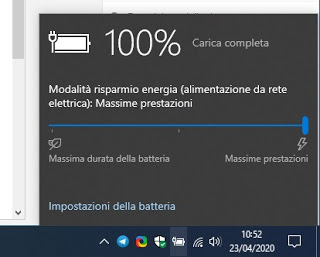
In this way Windows 10 will automatically adjust all the system parameters to effectively reduce energy consumption and consequently decrease the heat produced (and consequently the noise of the fans).
In the Windows 10 battery management box, which appears by pressing the battery icon on the taskbar, you can open the settings and activate the option that automatically activates the battery saving mode when the charge is less than 20% (this value can be changed).
Manual settings to reduce energy consumption
If the integrated system is not sufficient to “keep” the heat of the PC at bay, we can act on the advanced energy saving settings to decrease the clock frequency of the processor, so as to force it to “produce” less heat.
To do this we open the Start menu at the bottom left, look for the menu item Change power scheme, we press on the item Change advanced power management settings, scroll through the new window until you find the drop-down item Processor power saving and finally expand the entry Maximum processor performance level.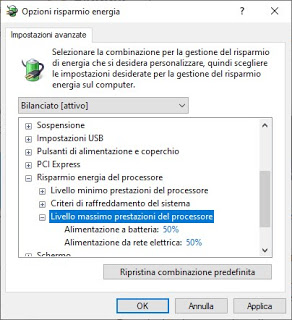
In the two fields shown (Battery powered e Mains power supply) we enter as a percentage 50%, so as to force our computer’s processor to run at half its effective performance; this translates into a great saving of energy and a lower production of heat, but we will have to avoid using programs that are too heavy or that require intensive use of the processor.
In the same screen where we set the processor performance we can reduce energy consumption by also acting on the network card settings, on the slot settings PCI Express and on the settings of the USB port, setting where necessary to Maximum energy saving.
To learn more we can read our article on Power Options in Windows 10 and Windows 7.
Programs to control energy consumption
If we want to use a dedicated program for energy saving on our computer we can evaluate the use of Real Temp, available for free for Windows.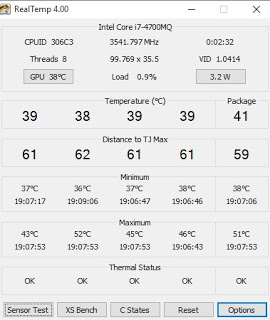
With this program we will be able to control the heat emitted by the CPU and its electricity consumption, so that we can carefully evaluate the temperature trend. In addition to temperatures, it also offers a good test for sensors, so as to evaluate the functioning of the computer in a very precise way.
If we want to check all the hardware on the computer, we can rely on a free program such as Open Hardware Monitor.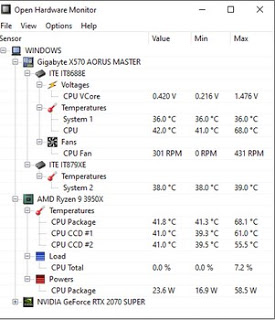
This open source application will show us, with a tree structure, all the active components on the notebook, indicating the detected temperatures, the energy consumption and the workload performed by the CPU and by the video card (if any) present in the system. This program is excellent for checking the speed of the fans and the trend of temperatures over time: just leave it open during use and check the values expressed under the column after a few hours. Max.
Another very useful program to control and reduce the power consumption of the laptop is Notebook FanControl, available for free and under an open source license.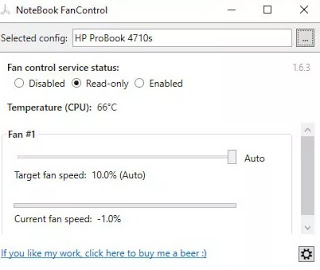
Thanks to this small tool we will be able to personally manage the speed of the fans, so as to be able to increase the speed or decrease it based on the heat emitted by the CPU, creating the right balance between noise and cooling of the notebook.
By setting the Automatic mode, the tool will adjust the speed by itself based on the parameters detected on the computer, acting much more effectively than integrated systems.
If we are interested in using other programs for temperature and heat, we recommend that you read our guide to programs to control the temperature and heat of the PC.
Conclusions
Most of the heat and energy consumed by a notebook concerns the CPU and GPU, which we can regulate using the energy saving system built into Windows 10 or one of the programs seen above.
If we are a bit more experienced users we can also delve into the field of Underclock, modifying the voltage and clock frequency parameters of the processor and GPU directly from the BIOS or UEFI. To deepen this aspect we can read our guides Change CPU, Graphics Card and RAM speed: better programs e Programs for CPU processor and video card Overclocking.
If our laptop suffers particularly from the heat and the integrated fans make a lot of noise, we can intervene promptly by reading the suggestions proposed in our articles on ways to cool your pc in hot weather e If the PC is making too much noise, reduce the fan speed.





